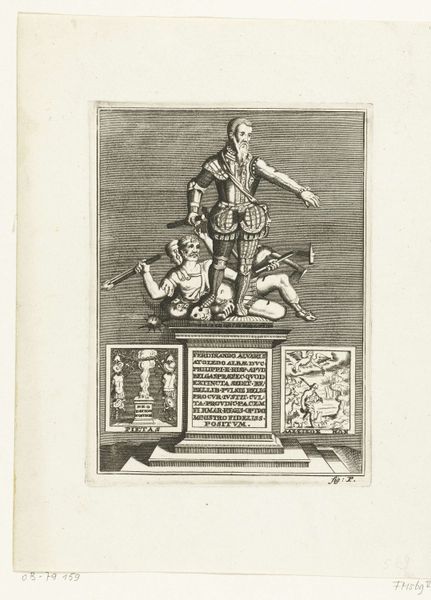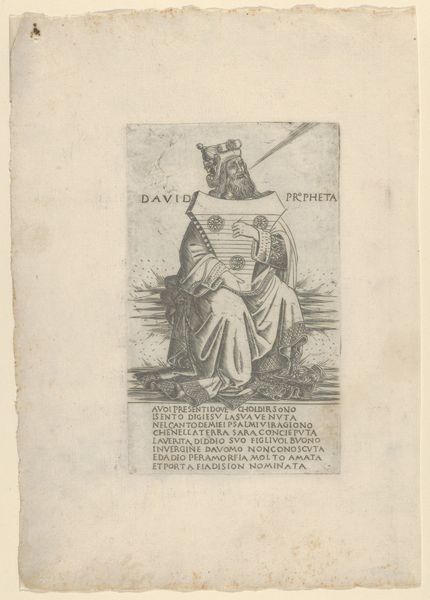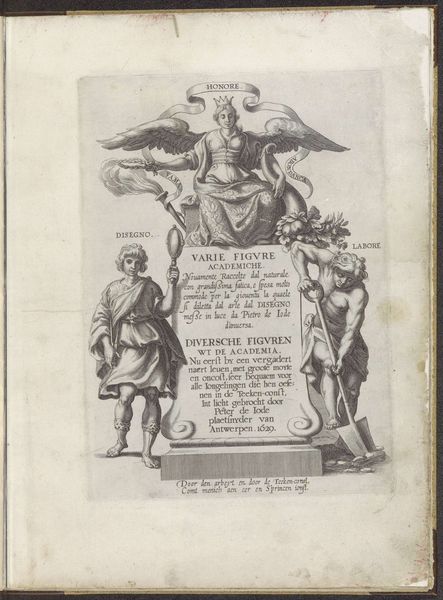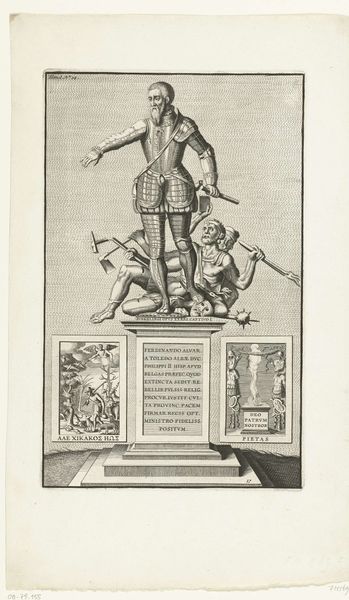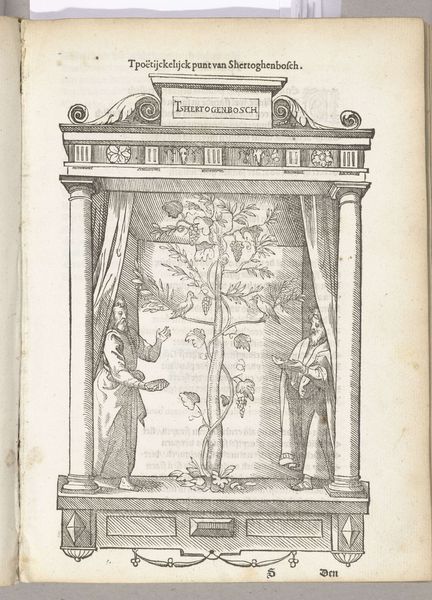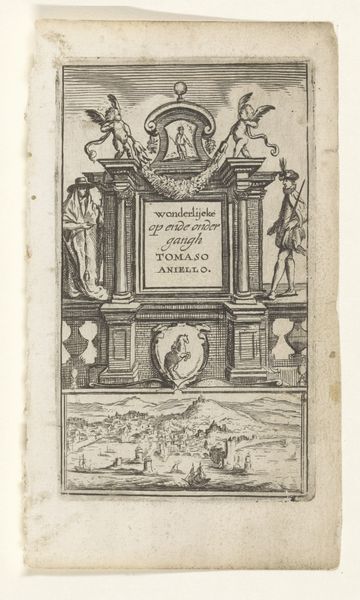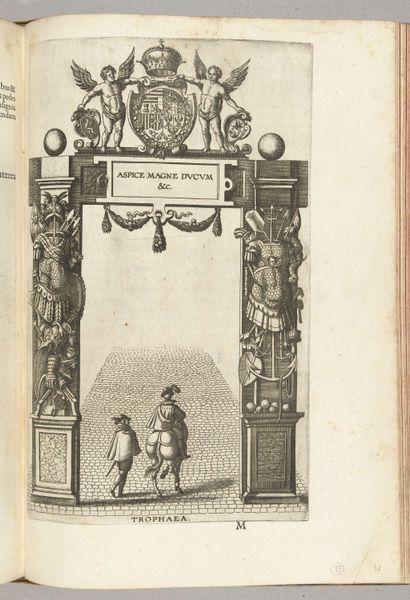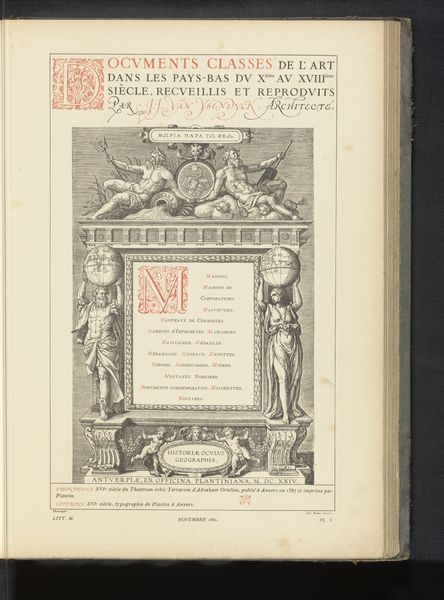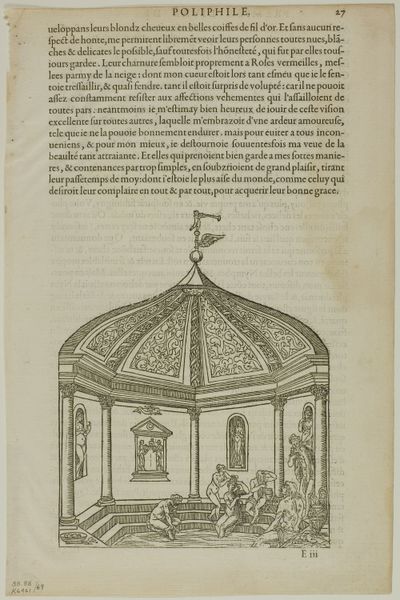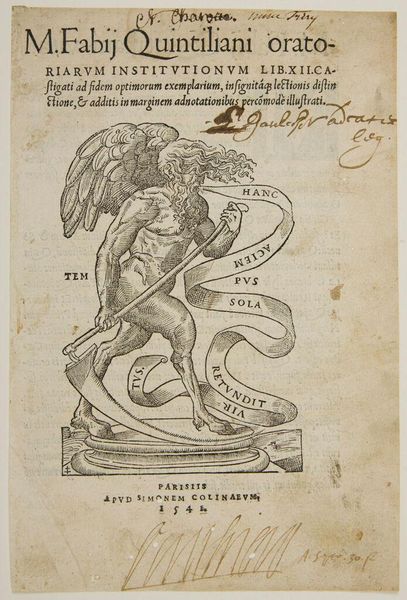
print, engraving
#
portrait
#
baroque
# print
#
figuration
#
history-painting
#
engraving
Dimensions: height 300 mm, width 240 mm
Copyright: Rijks Museum: Open Domain
Curator: This engraving from between 1688 and 1690 depicts a "Statue of the Duke of Alva," an image from a printed book now housed in the Rijksmuseum. My first thought is how much political calculation went into even just creating a symbolic representation like this. Editor: I'm immediately drawn to the medium itself—it's a print. Given its existence in book form, this image was likely designed for fairly wide circulation. The materiality of print lends itself to propaganda, doesn’t it? Curator: Absolutely. The Duke of Alva, a controversial figure, standing over defeated figures... this wasn't just a neutral portrait. It actively attempts to construct and perpetuate a certain narrative about his power. Consider the labor involved—the engraver's skill transforming an idea into a reproducible image meant for dissemination. Editor: The choice of engraving seems intentional, offering stark contrasts and sharp lines, mirroring the Duke’s supposedly firm rule. You see those vanquished figures at the base of the statue—and it looks as if Alva literally steps on the people. Who exactly crafted this image, and under whose directive? Understanding their social positioning could unravel even more of this piece. Curator: It's unsigned, but that's part of the point, isn't it? It functions almost like an official decree, the artistry subsumed to the message. Editor: What I find compelling is the distance. The artwork dates over a century after Alva's original statue. It reminds us that even in printed, reproducible form, imagery surrounding powerful figures could be a controlled, constructed projection. It suggests not only historical agency but also enduring debates over legacy and authority. Curator: This little print opens up so many pathways into understanding the public role of art in shaping historical memory. Editor: It pushes me to reconsider the means by which those narratives get made. Even the finest engravings, made for mass production, hold a trace of the material conditions under which they were produced, as well as clues about Alva's place in Dutch cultural memory.
Comments
No comments
Be the first to comment and join the conversation on the ultimate creative platform.
